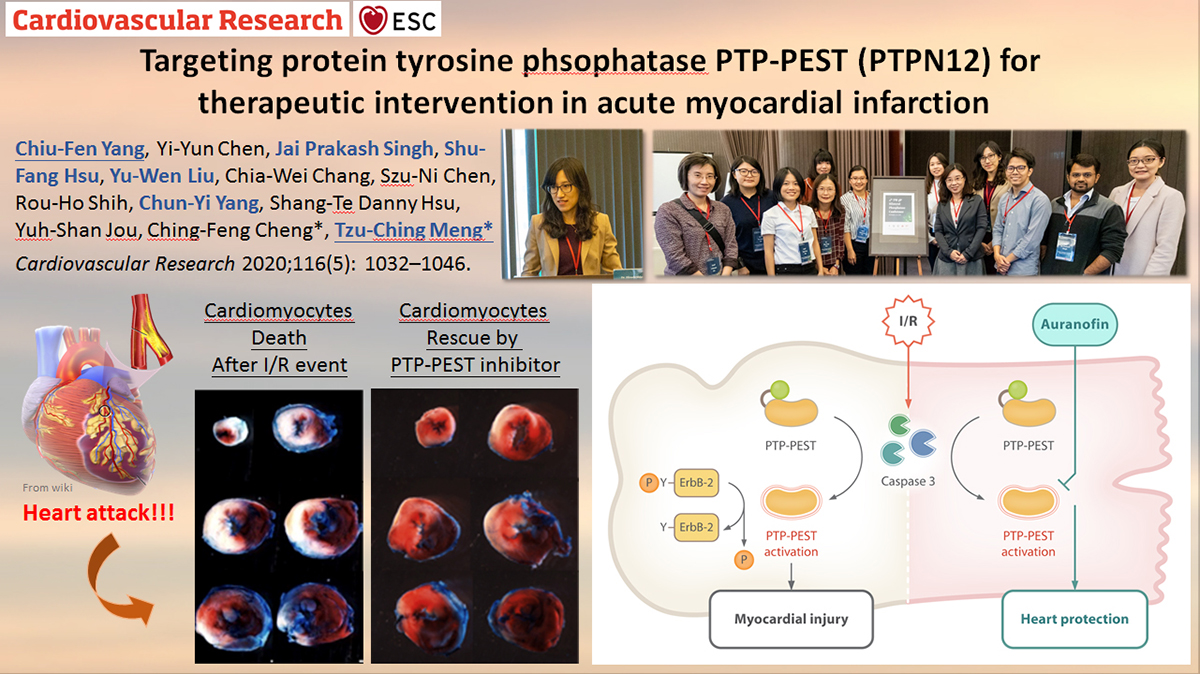
 中央研究院 生物化學研究所
中央研究院 生物化學研究所
Aims: The myocardial ischaemia/reperfusion (I/R) injury is almost inevitable since reperfusion is the only established treatment for acute myocardial infarction (AMI). To date there is no effective strategy available for reducing the I/R injury. Our aim was to elucidate the mechanisms underlying myocardial I/R injury and to develop a new strategy for attenuating the damage it causes.
Methods and results: Using a mouse model established by ligation of left anterior descending artery, we found an increase in activity of protein tyrosine phosphatases (PTPs) in myocardium during I/R. Treating the I/R-mice with a pan-PTP inhibitor phenyl vinyl sulfone attenuated I/R damage, suggesting PTP activation to be harmful in I/R. Through analysing RNAseq data, we showed PTPs being abundantly expressed in mouse myocardium. By exposing primary cardiomyocytes ablated with specific endogenous PTPs by RNAi to hypoxia/reoxygenation (H/R), we found a role that PTP-PEST (PTPN12) plays to promote cell death under H/R stress. Auranofin, a drug being used in clinical practice for treating rheumatoid arthritis, may target PTP-PEST thus suppressing its activity. We elucidated the molecular basis for Auranofin-induced inactivation of PTP-PEST by structural studies, and then examined its effect on myocardial I/R injury. In the mice receiving Auranofin before reperfusion, myocardial PTP activity was suppressed, leading to restored phosphorylation of PTP-PEST substrates, including ErbB-2 that maintains the survival signalling of the heart. In line with the inhibition of PTP-PEST activity, the Auranofin-treated I/R-mice had smaller infarct size and better cardiac function.
Conclusions: PTP-PEST contributes to part of the damages resulting from myocardial I/R. The drug Auranofin, potentially acting through the PTP-PEST-ErbB-2 signalling axis, reduces myocardial I/R injury. Based on this finding, Auranofin could be used in the development of new treatments that manage I/R injury in patients with AMI.
